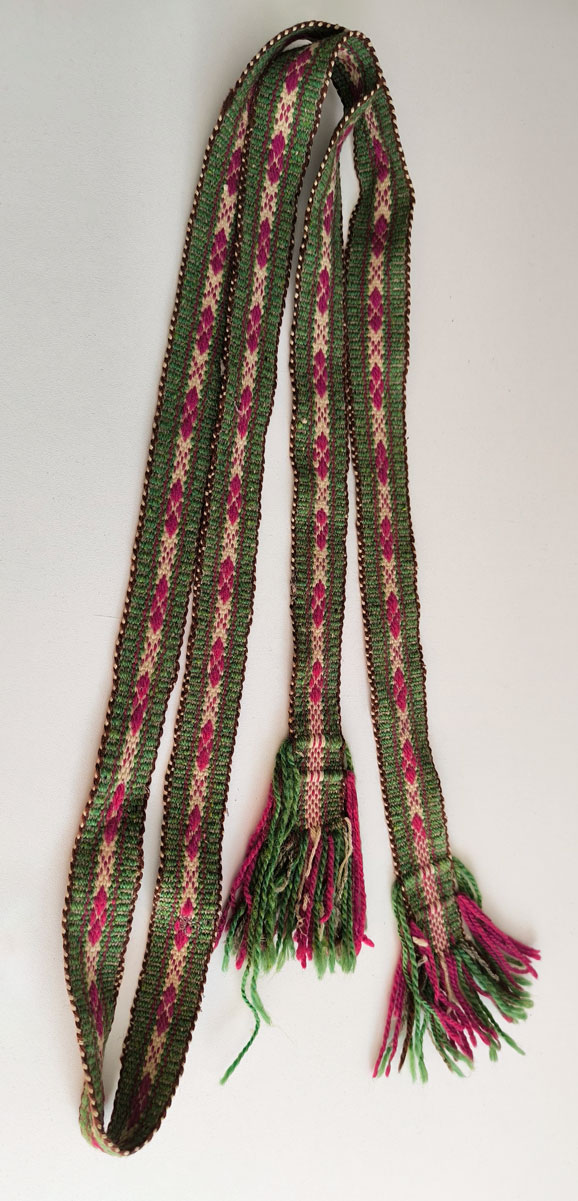

This Baltic leather waistband adorned with brass decorations represents a sophisticated fusion of practical function and mythological expression. Archaeological findings of such items throughout the Baltic region reveal how everyday objects served as carriers of cultural identity and cosmic understanding in traditional societies.
The intricate brass fittings, featuring geometric patterns and solar symbols, transform a utilitarian item into a statement of both social status and spiritual alignment. The sun motif, recurring throughout Baltic decorative arts, connects the wearer to cycles of life, fertility, and temporal order—fundamental concepts in agricultural societies whose prosperity depended on cosmic regularity.
Beyond indicating social standing, such elaborately decorated belts likely served protective functions, with specific motifs believed to safeguard the wearer from various harms. This integration of practical, social, and apotropaic functions illustrates how pre-modern societies operated with more unified conceptual frameworks than modern compartmentalised thinking allows, seeing no contradiction between practical purpose and symbolic meaning.
The combination of leather and brass demonstrates not only technical skill but conceptual sophistication, bringing together animal-derived and earth-derived materials to create an object that mediates between different realms. This material hybridity mirrors the belt's function as a boundary marker on the human body, encircling the waist at the juncture of upper and lower body. Such items provide tangible evidence of how mythological thinking permeated everyday life in traditional Baltic societies, embedding cosmic understanding in the most practical aspects of material culture.
𝌇 READ: "Expositions", Lithuanian National Museum of Art.
↑ ▢ "Replica Baltic Waistband"; Photographer: Aušra Jasiukeviciūtė.
Copyright: Source materials belong to the public domain sources they originate from. See source site links for full rights and usage details. Materials shared on this site are used in accordance with Public Domain, Creative Commons, Open Access licenses, or applicable Fair Use principles. All rights remain with the original creators.
Copyright: Source materials belong to the public domain sources they originate from. See source site links for full rights and usage details. Materials shared on this site are used in accordance with Public Domain, Creative Commons, Open Access licenses, or applicable Fair Use principles. All rights remain with the original creators.